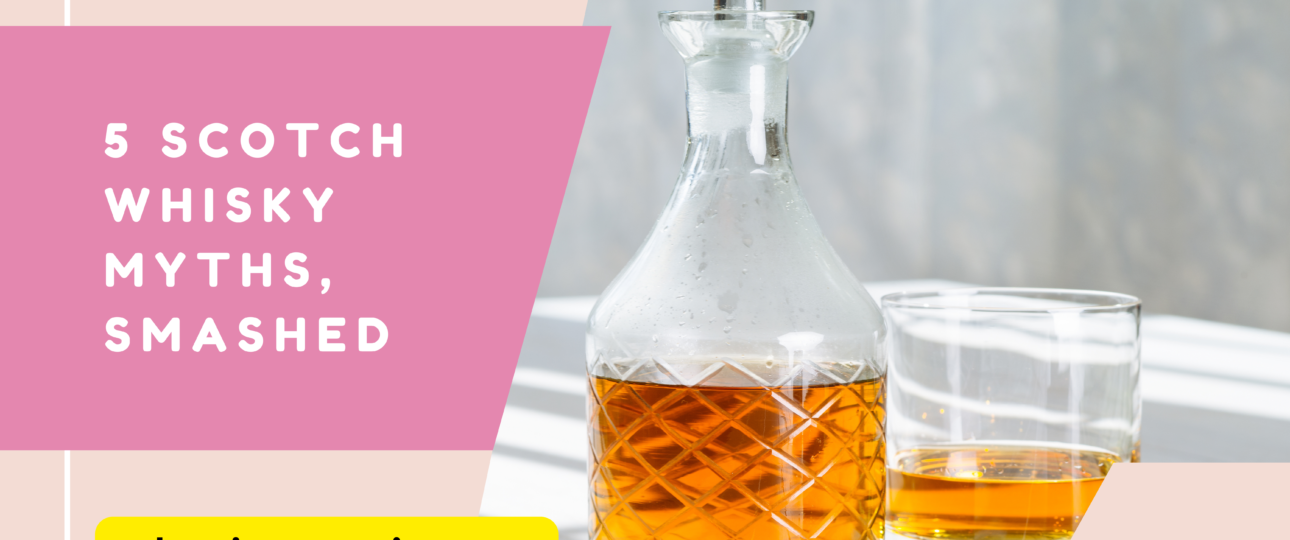“William Wallace is seven feet tall!… Kills men by the hundreds! And if he were here, he’d consume the English with fireballs from his eyes…and bolts of lightning from his arse.”
I visited Scotland back in 2003- even visited St. Andrews University when Prince William was attending and yes I did kind of meet him, dude coughed on me when we passed each other and he got me sick. True story. Anyways, one thing I learned from my travels and the fact I have Scottish ancestry is Scotch whisky (Note: whiskey refers to bourbon, rye, Scotch and other liquors distilled from a mash of grain, while whisky specifically connotes those from Scotland.) And in my many travels, I’ve heard just about every misconception there is about this wonderful liquid.
They’re about as true as the Braveheart excerpt above, so here are five of the most common, and what to think or say the next time you encounter them.
I find most whiskies around 18 years old hit the mark and offer me more than most 20- to 25-year-old selections. Some guys feel the same way about dating!
1. All whisky tastes the same.
To the novice, this may ring true. The first experience with whisky by many people I talk to goes along the lines of breaking into dad’s liquor cabinet as a teen and downing half a bottle of some cheap blended whisky. The body’s automatic reaction of utter rejection would be enough to put off even the hardiest of souls. There are several factors that influence the flavor profile of whisky, including geography, grain, water source, production methods and cask management or maturation. The only way to truly get a sense of the complexity and essence of whisky is to attend tastings and get an education on the subtleties and diversity of this remarkable spirit. It is amazing the difference a little education and appreciation makes to the experience of sipping a fine whisky.
2. If you don’t pick up “old worn saddle leather and the aroma of chewed tobacco spit with a hint of dark chocolate,” you are doing it wrong.
On the other end of the spectrum is the perception that whisky is excessively complicated. But taste is subjective. Not everyone tastes or likes food the same, so why would whisky be any different? Don’t be intimidated by the so-called experts’ outrageous tasting notes, which can be so inventive that they just don’t resonate with the average person. For the most part, they’re just having fun, and their creativity was probably fueled by their state of inebriation at the time. Several generic tastes and aromas are present in whisky depending on several factors, such as cask type used during maturation, regional influence and production process. Fruity, spicy, smoky, peaty and floral are some of the more common terms you will hear. You can use these as a guideline to help you create your own personal vocabulary and taste/aroma library. Perhaps you recognize a particular fruit in the aroma or a prominent spice resonates more with you on the palate. Ultimately, just smell, sip, savor and enjoy your own interpretations.
3. Real men drink whisky neat.
This is the number one myth that I debunk on a daily basis. Even the guys who make this stuff add a little water. It’s okay to drink it neat if that’s the way you prefer to enjoy the aromas and tastes from your whisky, but don’t use the argument that it is somehow more masculine. Many whisky connoisseurs find that adding a drop of water to their whisky helps release many aromas and flavors held within the libation. A drop of water also reduces the alcohol content given off as ethanol, which can sometimes numb your sense of smell and taste, taking away the subtleties.
I often use the wine analogy here—just as wine needs a little oxygen to open up and breath, whisky needs a little water. How much water? It’s subjective, so find your own sweet spot! If you like ice in the glass, fine! Even I admit that sipping on whisky while basking in the heat of my favorite beach on Cayman Islands is difficult without a little ice. My only suggestion here is that you do not put so much ice in the glass that it reduces the temp of the whisky to point where no aromas can release from the spirit. One or two cubes should suffice. After all, aroma is a major part of the enjoyment.
4. The older and more expensive, the better.
Aging whisky is more about maturity than time. It is feasible that you can fill two similar casks with the same spirit for 12, 15 or 18 years, and have two slightly different whiskies. Let’s face it, even people mature differently—just ask my ex-wife who believes I never really matured at all. Again there are so many factors involved outside of the age statement that give Scotch its taste, balance and complexity. There is a scarcity cost involved with older whiskies, a time/money investment. In addition, because of the evaporation rate (angels’ share) from the cask, there is a continuous loss of spirit as the years go by, so it costs more to produce, hence the higher price tag. This can lead to some amazing whiskies but does not guarantee the whisky is better than some of its younger counterparts. I find most whiskies around 18 years old hit the mark and offer me more than most 20- to 25-year-old selections. Some guys feel the same way about dating!
5. Only our grandfathers drink single malt Scotch.
There has been a significant change in the whisky-drinking demographic over the past few years. Consumers of good Scotch whisky are younger and more diverse. The brands have created more opportunities for the younger consumer to taste their whiskies through experiential events and seminars. Drinking Scotch is now stylish, classy and fun. There is also a significant increase in female participation. A growing number of distillers are female, and there are some very knowledgeable female brand ambassadors in the marketplace to educate the consumer. In other words, show this article to your lady friends. The way I see it, the more the merrier!




















